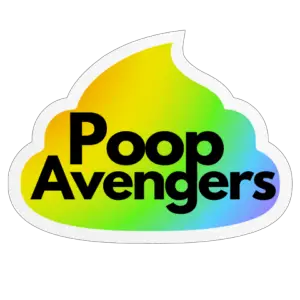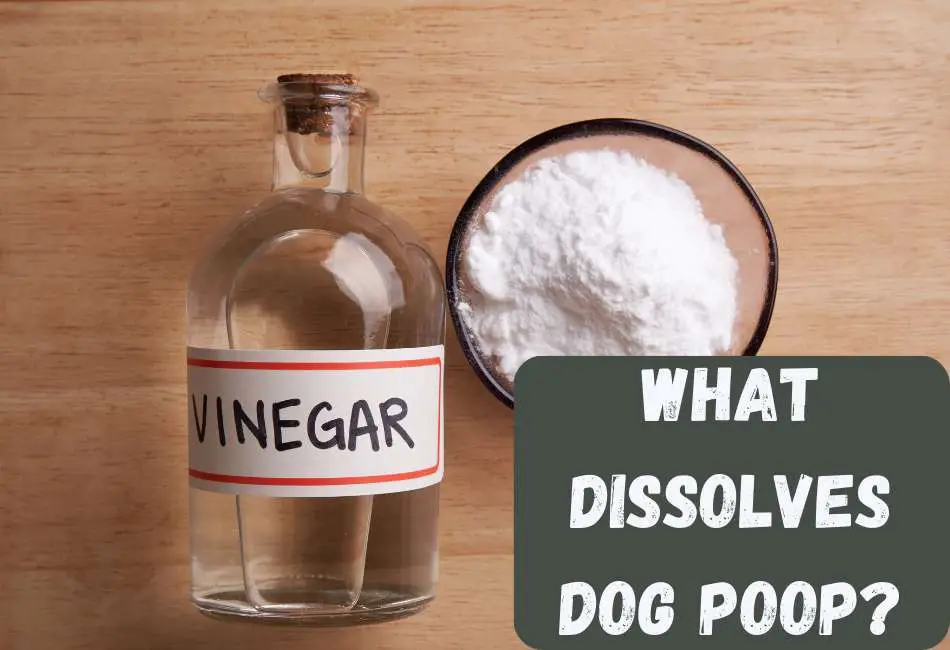When it comes to dog ownership, one of the most debated, and sometimes even dreaded, topics is undoubtedly dog waste management. It’s an essential part of the package that isn’t always pleasant.
If not handled properly, dog waste can pose significant health risks to your four-legged friend, the environment, and other community members.
More than simply keeping your neighborhood clean, responsible waste management embodies respect for others and the environment.
So, let’s dive into the nitty-gritty of dissolving dog poop. In this article, we’ll break down 11 effective solutions that will revolutionize how you handle this unavoidable aspect of dog ownership.
Each solution aims to make the process more manageable, less time-consuming, and, whenever possible, less yuck-worthy. So, fetch your reading glasses, and let’s talk poop!
1. Enzymatic Solutions
I’ve always been amazed by the power of enzymes. These microscopic powerhouses work tirelessly, breaking down complex substances into simpler ones. This, in essence, is the basis of enzymatic solutions.
How Enzymatic Solutions Work
Enzymatic cleaners contain billions of enzymes specifically designed to break down organic matter.
When applied to dog poop, they digest the waste, leaving behind water and carbon dioxide. It’s like having billions of microscopic cleanup crews working tirelessly to clean up after your dog!
Benefits of Enzymatic Cleaners
The biggest benefit of enzymatic cleaners is that they’re incredibly effective. They don’t just mask odors; they eliminate them at the source by breaking down the waste.
Plus, they’re eco-friendly and safe for pets and children, which is a big plus in my book.
2. DIY Solutions with Household Items
If you’re more of a do-it-yourselfer, don’t worry, I’ve got you covered. Some common household items can also be effective in dissolving dog poop.
Common Household Items
Vinegar and baking soda, for instance, can be combined to form a powerful, all-natural cleaning solution. Citrus-based solutions are also effective, as citric acid helps to break down the waste.
Vinegar and Baking Soda Mixture: Recipe and Application
To make a vinegar and baking soda solution, mix equal parts of white vinegar and baking soda into a spray bottle.
Shake it well, then spray it directly onto the poop. Let it sit for a few minutes to work its magic, then rinse it away with warm water.
Citrus-Based Solutions: Making and Using at Home
Making a citrus-based solution at home is also easy. Squeeze the juice from a couple of lemons or oranges into a spray bottle, add a little water, and you’re ready. Spray it onto the poop, give it a few minutes to work, then rinse it away.
3. Flushable Dog Poop Bags
Let me tell you, discovering flushable dog poop bags was a game-changer for me. I’m all about doing my part to protect the environment, and these bags offer a solution that’s convenient and eco-friendly.
They’re made from a special material that dissolves in water, making dog waste disposal as easy as flushing a toilet!
Benefits of Using Flushable Bags for Dog Waste Disposal
Aside from the obvious convenience, flushable dog poop bags have several other benefits. They’re biodegradable, breaking down naturally without harming the environment.
They’re also hygienic, as flushing waste reduces the risk of disease transmission. And let’s not forget the odorless factor. No more stinky trash cans!
4. High-Pressure Water Solutions
Sometimes, you need a little extra power to get rid of stubborn dog poop, and that’s where high-pressure water solutions come in.
I tried this method out of desperation, but I was amazed by its effectiveness. You use a device that shoots a jet of water to dislodge and disperse the poop.
Benefits and Limitations of Using Water Pressure
Using water pressure for waste removal has its pros and cons. It’s effective and quick, but remember it can be messy.
You’ll want to stand back to avoid any splashback! Also, while it’s a fantastic solution for outdoor use, it wouldn’t be my go-to method for indoor accidents.
5. Dog Waste Digesters
Here’s a solution that’s sustainable and practical: Dog Waste Digesters! They’re exactly as they sound – devices specifically designed to break down dog waste in an eco-friendly manner. Now, isn’t that a breath of fresh air?
How Dog Waste Digesters Work
These little heroes work similarly to a home composting system. They use natural processes to break down dog waste into a form that’s far less harmful to the surroundings.
The waste goes in, the digester works its magic, and voila – the waste is reduced to a fraction of its original size! I was initially skeptical, but once I saw the results, I was sold.
Conclusion
So, there you have it, folks – 11 effective solutions for dissolving dog poop. It’s all about finding what works best for you and your furry friend.
Remember, as pet owners, we are responsible for managing waste in a way that respects our precious environment.
With these tools, we can create a cleaner, healthier space for our pets and ourselves. Not only do these solutions help us get rid of the yuckiness, but they also contribute to the bigger picture of sustainable living. And isn’t that a cause worth pooper-scooping for? Let’s do our bit, one poop at a time!


Excellent information! Very grateful! Question: after the snow melt, there are soggy piles of dog poop left behind on my lawn. While I have removed the majority of the mess, it’s still a problem. Would it be best to use vinegar then baking soda? Baking soda then vinegar? Baking soda on its own or mixed with Diatomaceous earth?
Thank you for your kind words and for reaching out with your question!
Dealing with soggy piles of dog poop post-snowmelt can indeed be challenging, but you’re on the right track with considering natural solutions. Here’s a method you can try, leveraging the items you mentioned:
Vinegar and Baking Soda Method:
Initial Clean-Up:
Since you’ve already removed the majority of the mess, ensure any remaining solid waste is also cleared away as much as possible.
Vinegar Application:
Start by lightly spraying the affected area with white vinegar. Vinegar is a strong deodorizer and will help in breaking down the remaining waste and neutralizing the odor. Let it sit for a few minutes.
Baking Soda Application:
After the vinegar has had a chance to work, sprinkle baking soda over the area. Baking soda is excellent for absorbing moisture and further neutralizing odors. When baking soda and vinegar interact, they fizz and help break down residues.
Final Rinse:
After letting the mixture sit for a few more minutes, gently rinse the area with water. This helps in washing away the residue.
As for the use of Diatomaceous Earth (DE), it’s known for its absorbent properties and can be beneficial in dealing with soggy spots too.
Thanks again and hope this helps 😉